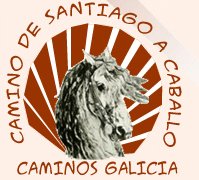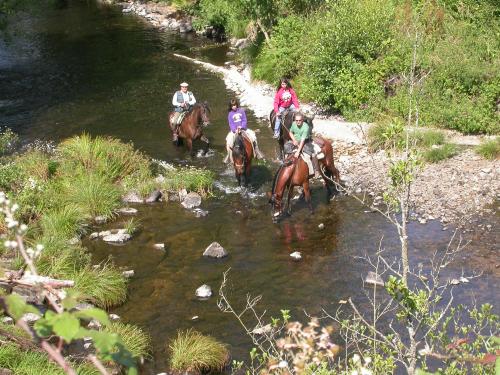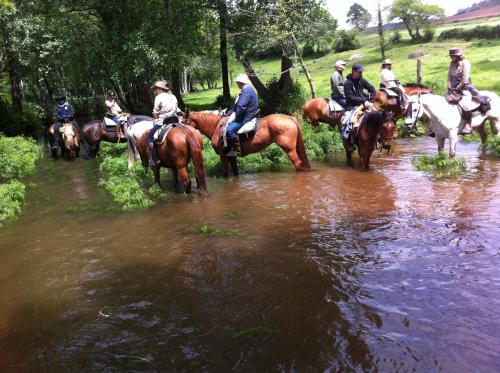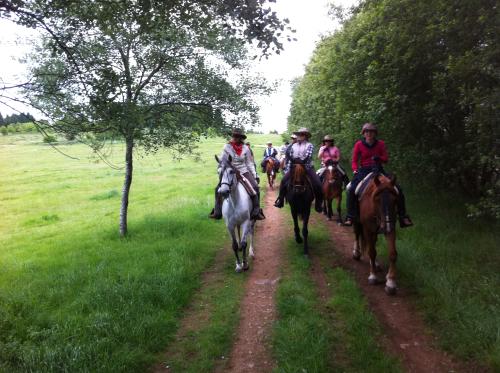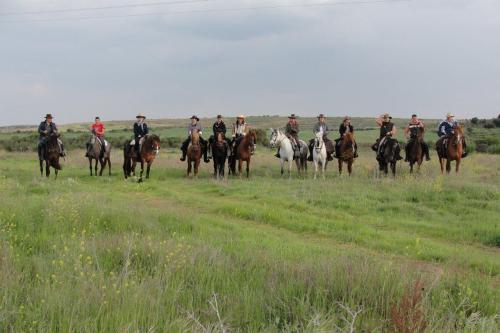- +34 639 503 815
- Caminos de Galicia. Caritel 2 Ponte Caldelas. 36829 Pontevedra
- caminosgalicia@hotmail.com
Vía de la Plata
It passes through the provinces of Ourense, Pontevedra and A Coruña, crossing natural areas of great beauty, with a rich cultural and ecological heritage. Due to its long route, there are alternatives and several accesses to Galicia from the northeast of Portugal and through the Sil basin, a traditional entrance to Galicia since ancient times. The Southeast Road is an extension of the Roman road called Vía de la Plata, which linked Mérida with Astorga, crossing from south to north the west of the peninsula and crossing the Tajo and Duero rivers.
The term “Vía de la Plata” derives, precisely, from the original etymological meaning of the Arabic Banatta, with which the Muslims designated that wide cobbled public road with a solid layout that headed towards the Christian north. The name Vía de la Plata does not refer, therefore, to anything that has to do with the exploitation or trade of the precious metal.
ITINERARY
The pilgrimage route, an extension of the Vía de la Plata, enters the province of Ourense through the port of Portela da Canda, in the municipality of A Mezquita, and continues to the places of A Canda and A Gudiña. Leaving the urban center of A Gudiña, the pilgrimage route could take the shortest route of the Verea Sur, towards Laza, or continue to Verín, a crossroads. The road continues to Monterrei, starring the silhouette of the county fortress that dominates the entire valley.
A) Monterrei-Trasmiras-Xinzo de Limia
Leaving Monterrei behind, the route continues to the town of Albarellos, whose parish is dedicated to the apostle, to continue to the place of Infesta and enter the municipality of Cualedro, passing through the nucleus of Rebordondo and the place of Pena Verde. It then continues towards As Estivadas, passes through Viladerrei and heads towards Trasmiras, taking advantage of the facilities of the valley of A Limia, passing through the places of Zos and Boado, before reaching Xinzo de Limia.
B) Xinzo de Limia-Sandiás-Allariz
The road continues to Vilarillo das Poldras, Couso de Limi and Vilar de Sandiás. The route continues to the village of Piñeira de Arcos, before crossing the valley that communicates with Allariz. In this municipality. 1 the pilgrim passes through Coedo, Outeiro de Torneiros, Paradilias and Torneiros, before reaching the village of Penedós, and then on to the town of Allariz.
C) Allariz-Ourense
After AIlariz the pilgrim continues to A Frieira, crosses the parish of Santiago de Folgoso and passes through Roiriz de Abaixo, Roirizde Arriba, Rubiás, Espilieiros, A Vila and Augasantas. The itinerary enters Taboa de la,cmz to the parish of Santiago de Rabeda, continues to Pereiras and enters San Cibrao das Viñas, passing through A Castellana and Ponte Noalla. In Ourense it passes through San Breixo de Seixalbo. Leaving behind the urban center of A Gudma, the route takes the Verea Vella or Vere a Sur path that crosses the impressive landscapes of A Serra Seca, passing through the Venda do Espmo and the Venda da Teresa. As there are no populated places in these overwhelming landscapes, the sales continue along the trail. After this rugged route, walking at an altitude of more than a thousand meters, A Serra Seca ends in Santiago de Campo Becerros, where the mta is called A Vrea Vella and where the pilgrims could count on the help of the knights of the Order of Santiago.
The route goes into Porto Camba, in a mountain valley of the Serra de San Mamede that belonged to the monastic sealorío of Montederramo and the canons regular of Xunqueira de Ambía. This pilgrimage route comes from Chaves (Portugal), crosses the border and passes through the town of Fecesde Abaixo, on the banks of the Támega, and the place of Mandín. Once in the municipality of Verín, continue to Tamaguelos, whose church is dedicated to Santiago, and continue through Mourazos, Tamagos and Cabreiroá, famous for its lithic water spa, before reaching the center of Verin. After passing near the castle of Monterrei, the route leaves behind the places of A Pousa and Mixós.
After passing through EstevÍños, Vences and Arcucelos, the route reaches the place of A Retorta, still in the valley of Monterrevieiras. Laza is a crossroads where this itinerary meets the Verea Sur, the old and traditional Camino de Castilla.
D) Laza-Vilar de Barrio-Xunqueira de Ambía.
After Laza, the road continues to Soutelo Verde and Santa María de Alberguería, an important landmark on this route, as there was an inn for travelers, as well as a charity hospital for pilgrims. Already in Vilar de Barrio, the pilgrim enters the municipal capital, continues to the place of Santa María de Bóveda, where the mansion of the Marquis of Bóveda de Limia, knight of Santiago, and a chapel founded by him in the parish church, and continues to Vilar de Gumareites. From here the road bears the name of Vrea de Santiago, it is of comfortable width, partly flooded in winter, and has a pavement of very worn stone slabs. Shortly after, it enters the municipality of Xunqueira de Ambía, passes through the parish of Sobradelo and crosses the Roman road XVIII of the Antonine Itinerary. The route continues to Bovadel and Cima de Vila, before entering Xunqueira de Ambía.
E)Xunqueira de Ambía-Ourense
After Xunqueira the road goes to the place of San Xillau and continues to A Pausay leaving behind the chapel of the Virgen del Camino. Then comes the place of Vila Nava, where there are houses emblazoned with crosses of military orders and shells of Santiago, and continues to Salgueiros and Os Casares; from here many pilgrims used to go to Santa Maril1a de Augasantas. The route then crosses the western end of the municipality of Bafíos de Molgas, passing through the place of Gaspar, and enters the lands of Padernede Allariz, leaving behind Cantoña and Ousende La Verea reaches the municipality of Taboa de la, crosses the parish of Santiago de Rabeda, and continues to Venda do Ríoy Pereiras. In Pereiras this itinerary mle to that of Xinzo and Allariz. It then passes through A Castellana, Ponte Noalla, San Breixo de Seixalbo and enters Ourense. The route enters the urban core of the capital of Auriense, to visit the cathedral and its Santo Cristo chapel, the Burgas fountain, the streets, squares and bridges over the river Miño.
F) Ourense-Cea
On leaving Ourense the road passes through Cudeiro and Sartédigos. Shortly after, it enters the municipality of Amoeiro and crosses the parish of San Paio de Bóveda, before reaching Tamallancos. In the place of Sobreira there is a detour that leads to the pazo-castle of Vilamarín, former residential fortress of the Counts of Rivadavia. At Ponte Sobreira you cross the Barbantiño River over a historic bridge and enter the municipality of Cea, passing through the picturesque places of Faramontaos, Viduedo and As Casas Novas. The road arrives shortly after at the center of San Cristovo de Cea. In the Ourense-Casas Navas (Cea) section there is another more modern alternative that initially follows the direction of the Millo along its right bank and continues to the place of Quinte1a, still in the municipality of Ourense, continues to Liñares and Cimadevila, two places in the municipality of Amoeiro, and enters Casas Navas after passing through Mandrás and Pulledo.
G) Cea-Castro de Dozón-Prado (lalín)-Silleda
After Cea, many pilgrims turn towards the monastery of Oseira. From Oseira, the route returns to Castro de Dozón, passing through Carballeidiña and Coiras. Another possibility for the pilgrim is to follow a shorter and more direct route from Cea to Dozón, passing through Porto do Souto, Cotelas, Piñor, Arenteiro, O Reino and Cargalleda, in the municipality of PUlor. Both possibilities lead the pilgrim to the center of Castro de Mozón. The road arrives at the top of Santo Domingo, where a chapel dedicated to this saint is built, enters Lalín (Pontevedra), crosses the parish of Santiago de Catasos, passing through Puxallos, and continues to Pontenoufe, A Xesta and Medelo. It then continues through Mesón de Cuüarro, Donsión, Empedrada and Prado. The route passes through the parish of Santiago de Tabeada (Silleda), crosses a medieval bridge over the Deza River and continues to the municipal capital.
H) SilIeda-Santiago
The last stretch of this pilgrimage route passes through the municipalities of Silleda, A Estrada, Vedra, Boqueixón and Santiago. Leaving Silleda, the route passes through Foxo, Margaride and Chapa. After crossing Chapa, it continues to Bandeira, Codeseira, Piñeiro and Castrovite (A Estrada); the route continues to Santa María de Loimil. The road passes through Casares and Carballas and crosses the parish of Santo Esteva de Oca.
The route continues to Valboa, Arnois, A Calzada and Veiga. It enters Vedra through Ponte Ulla, crosses the course of the Ulla River over a historic bridge and enters the province of A Coruña. The route leads to the places of Eiravedra, Francés, Cumbraos and Sobredo. A little further on it enters the municipality of Boqueixón, passing through Ruibal; leaving Rubial and Dexeiro de Arriba behind, the route reaches the municipality of Santiago and leaves behind the town of A Susana. It returns to Vedra, passing through Paradela, and finally enters Santiago through Corexo, Angrois and Cruceiro de Sar, on the outskirts of the historic city. Leaving behind the Collegiate Church of Sar and its interesting Museum of Sacred Art, the pilgrim faces a last effort before entering the historic city, crossing the Vires da Cerca street, leaving behind the baroque convent of the Mercedarian Mothers, Prado. Cross the Porta de Mazarelos, the only remaining part of the city wall, and arrive at Praza da Universidade.
The pilgrim continues along the lively Rúa da Caldeireria, descends the Costa de Xelmírez and arrives at the famous Praza das Praterias, through this southern entrance the pilgrim accesses the Cathedral of Santiago de Compostela, the goal of the western pilgrimage.
Do not hesitate to contact us for more information.
- Phone: +34 639 503 815
- Caminos de Galicia. Caritel 2 Ponte Caldelas. 36829 Pontevedra
- E-Mail: caminosgalicia@hotmail.com
